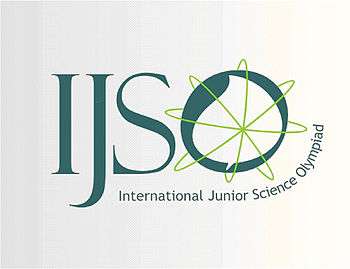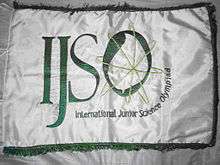International Junior Science Olympiad

The International Junior Science Olympiad (IJSO) is a major international academical competition held annually and the only international academical competition that covers physics, chemistry and biology at the same time. The competition is known for its intricacy as it requires a wide knowledge range in all three sciences. Top students from each country are selected to the competition and each get a chance to compete with their counterparts from across the globe.
Aim
The aim of IJSO is to encourage further development of scientific knowledge within precocious and talented students, while allowing them to both cooperate and socialize with each other. Through this, the competition hopes to foster passion, knowledge and communication within potential future scientists.
Format
For the competition, each country may only send a team of up to 6 students, 15 or younger, and 3 official team leaders.
Examinations

The examinations consist of three separated tests, done in different days. The tests require knowledge about science of physics, chemistry and biology. The maximum score is 100 points.
Test examination
(3 hours) The test examination is composed of 30 multiple choice questions, 10 involving physics, 10 involving chemistry and 10 involving biology. Each of the questions has 4 options. The competitor earns 1 point for each right answer, earns nothing for questions left unanswered and loses 0.25 for wrong answers. The maximum score for this test is 30 points.
Theoretical examination
(3 hours) The theoretical examination is made up of three parts, one for each of the subjects. Each part contains several questions about one or more topics from the respective science. The maximum score for this test is 30.
Experimental examination
(4 hours) The experimental examination is done in groups of up to three people of the same country, each country may have up to 2 teams. The groups should follow the instructions and answer the proposed questions. All students of the group receive the same grade. The maximum score for this test is 40 points.
Awards
After the correction of the tests, the students are ranked according to their grades. Then the top 10% students receive gold medals, the next 20% students receive silver medals and another 30% receive bronze medals.
Also, team prizes are offered to the best results at the experimental examination and the best country in the tournament. Individual prizes are offered to the best student in the theoretical examination and to the best overall. The Local Organizing Committee (LOC) is responsible for giving official participation certificates to all students, leaders and observers.
External links
| Wikimedia Commons has media related to International Junior Science Olympiad. |
- IJSO Facebook Group
- IJSO Official Website
- Official Website of IJSO 2007
- Official Website of IJSO 2008
- Official Website of IJSO 2009
- Official Website of IJSO 2010
- Official Website of IJSO 2011
- Official Website of IJSO 2012
- Official Website of IJSO 2013
- Official Website of IJSO 2014
- Official Website of IJSO 2015
- Official Website of IJSO 2016
- National Science Olympiad Website of South Africa
- IJSO discussion group at sciencestage.com
- IJSO Online Mock Test Series